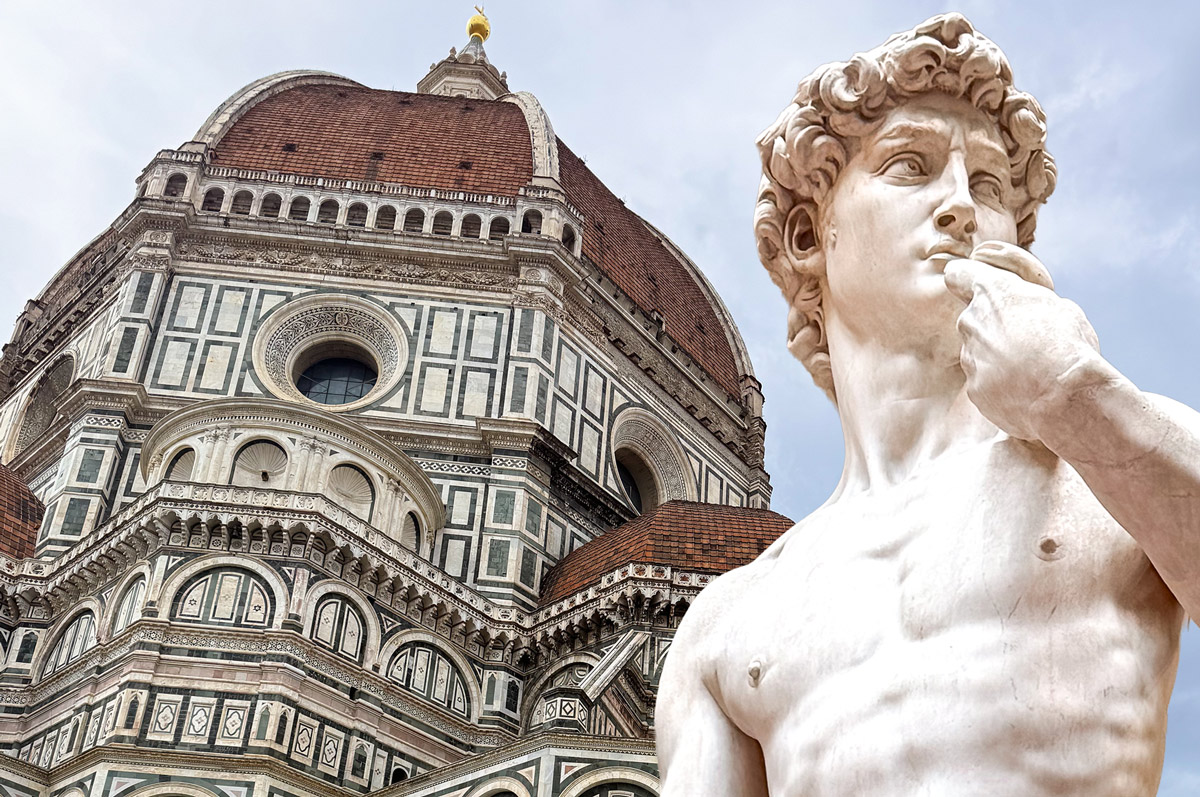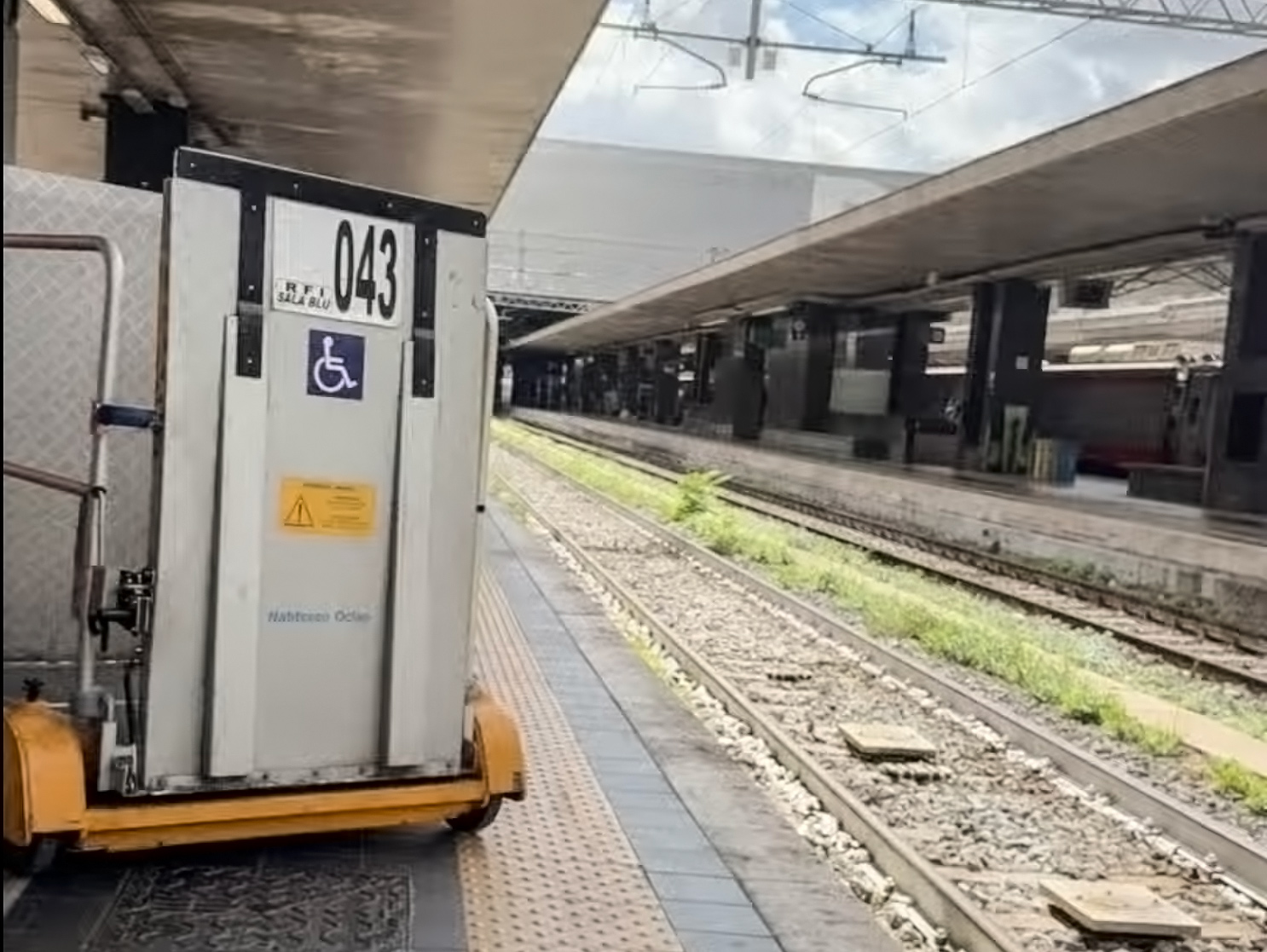A Wheelchair User’s Guide to Visiting Venice, Italy

When you think about wheelchair-accessible travel destinations, Venice, Italy probably isn’t the first place that comes to mind. With over 400 bridges and a transportation system made up almost entirely of boats, it sounds nearly impossible. But I was pleasantly surprised to discover that, while not the most accessible city we’ve visited, Venice offers far more accommodations for people with disabilities than you might expect.
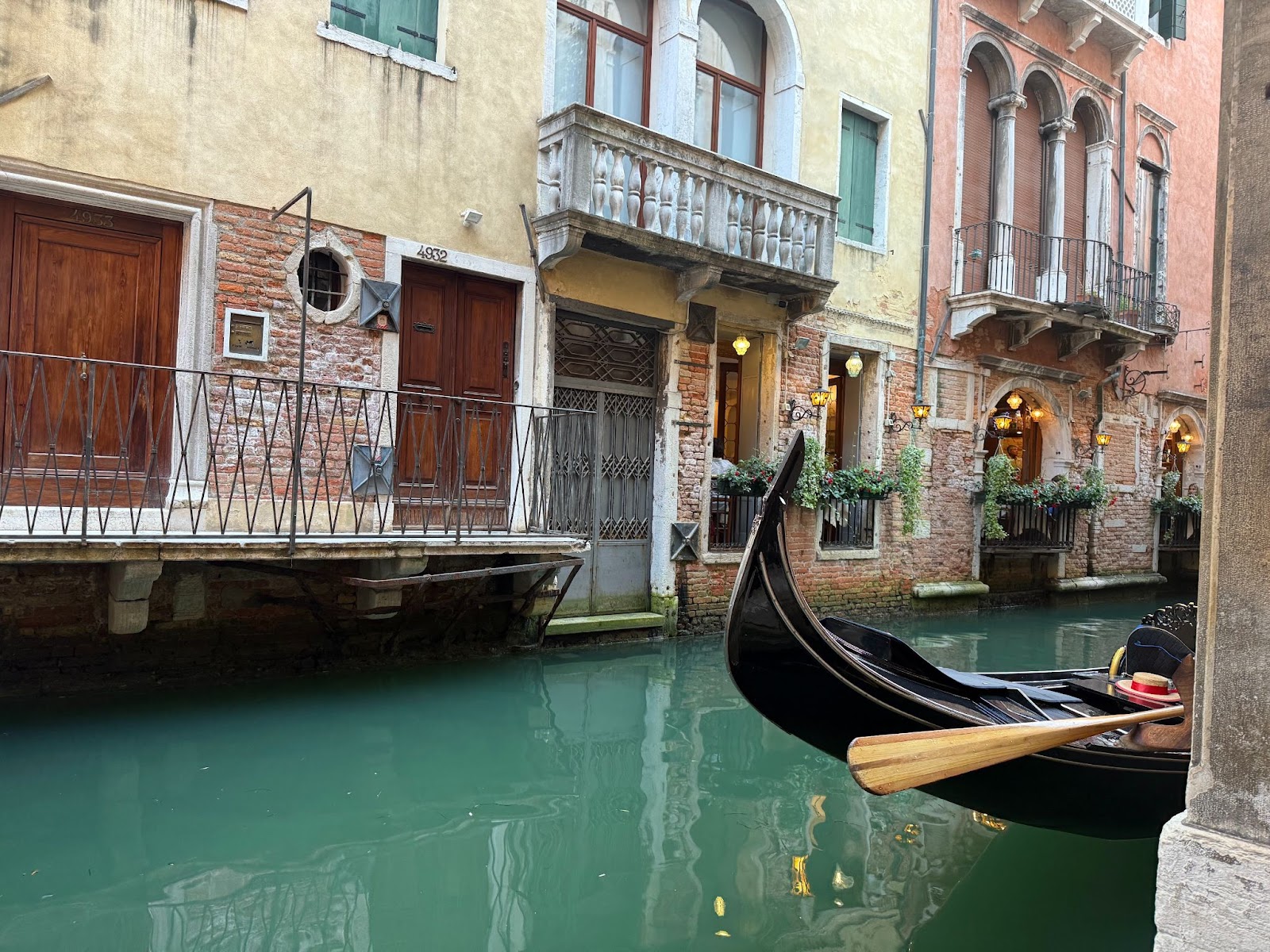
Venice was the third stop on our Italy adventure. We began our trip in Rome and then continued on to Florence, traveling with Cory Lee and the accessible travel company Wheel the World. For the final leg of our journey, we decided to venture to Venice on our own. There were five of us on this leg of the trip: me, my husband Jordan, my brother JC (all three of us use power wheelchairs), and my parents. We spent 3.5 days exploring Venice and were able to enjoy nearly everything the city had to offer.
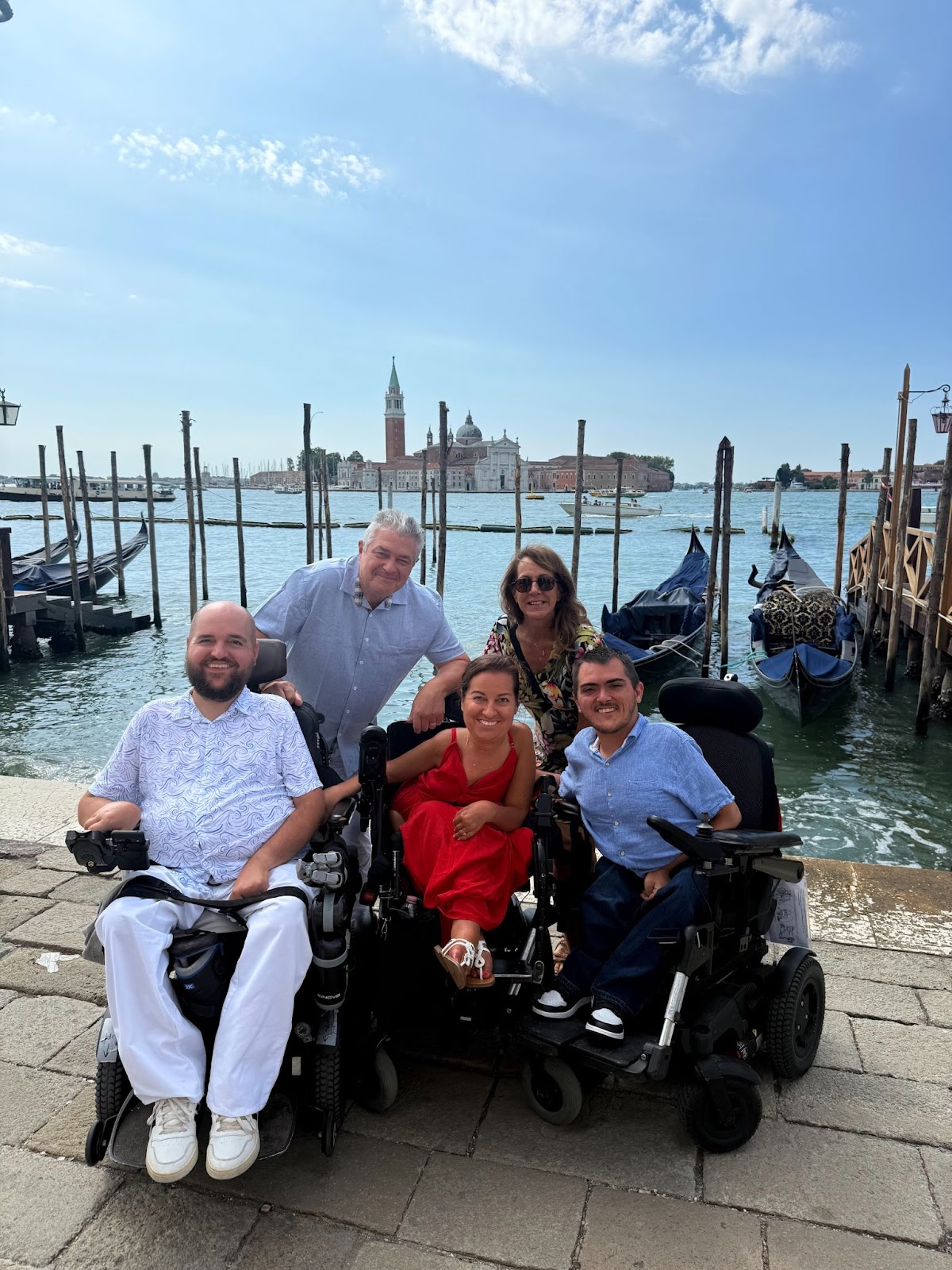
Getting to Venice by High-Speed Train
We traveled from Florence to Venice via Italy’s Frecciarossa high-speed train, which took just under two hours. Trains in Italy accommodate up to two wheelchair users per train, so our group had to split up. Thankfully, they run every hour, so the logistics weren’t too difficult.
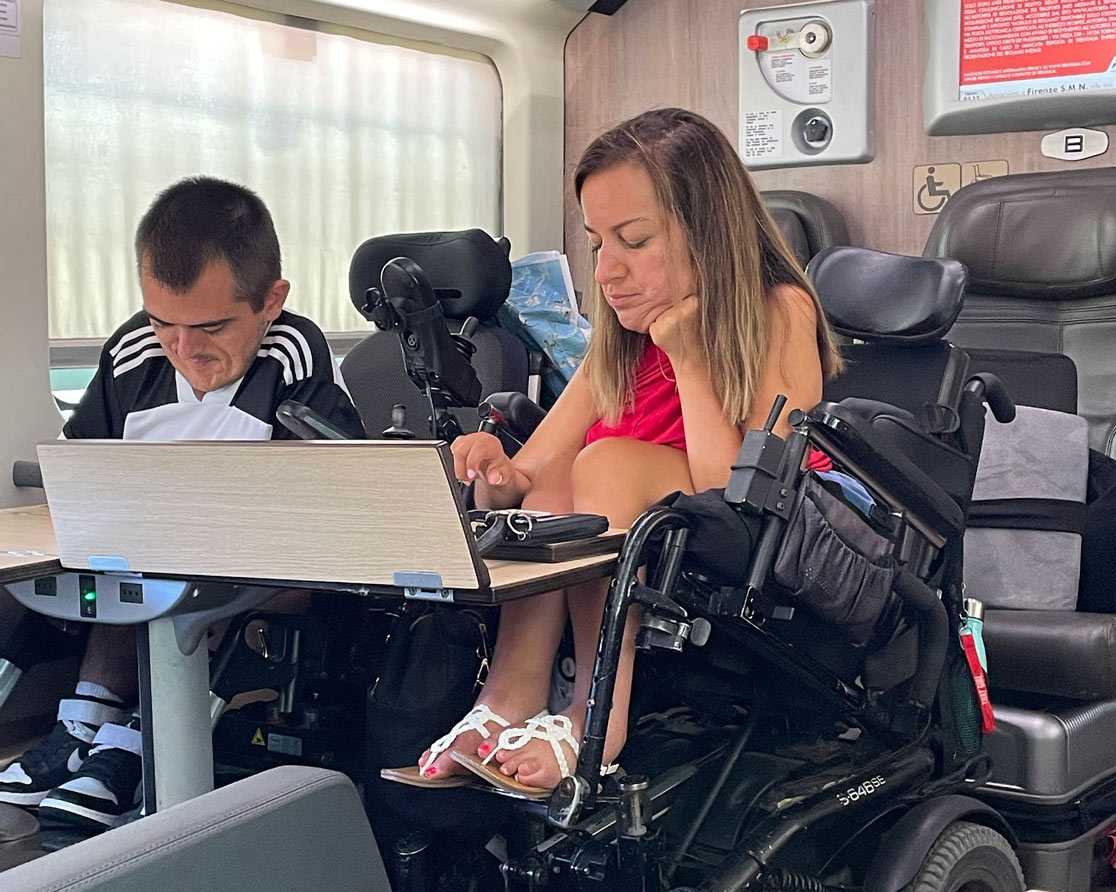
We used the Sala Blu service offered by Trenitalia to book accessible tickets before we left. They also helped with our luggage and provided boarding assistance via a platform lift, which made boarding incredibly smooth. Booking can feel confusing at first, but once you know the steps, it’s surprisingly simple. (I wrote a full step-by-step guide on booking accessible train tickets in Italy—read it here.) Once onboard, we had plenty of room, and enjoyed drinks and snacks at our own table.
Upon arrival at Venice Santa Lucia Station, staff were already waiting to assist us off the train. As soon as we exited, we were greeted by the sparkling Grand Canal and the unmistakable charm of Venice.
Getting Around Using Water Busses
Venice’s primary public transportation comes in the form of vaporettos - large public water buses. Fortunately, they are surprisingly wheelchair accessible. Every vaporetto is wheelchair accessible and can accommodate at least one wheelchair user. Lines 1 and 2 (the largest routes along the Grand Canal) can handle multiple chairs more easily.
Here’s what to know:
- Tickets: Only €1.50 for people with disabilities; companions travel free.
- Boarding: Staff always assist with ramps and let wheelchair users on first.
- Challenges: Some ramps are steep depending on the tide and many docks have large bumps, requiring a push. While I couldn’t do it independently, I never felt unsafe with help.
The ticket office suggested we buy multiple one-way tickets in advance rather than multi-day passes, which turned out to be more cost-effective.
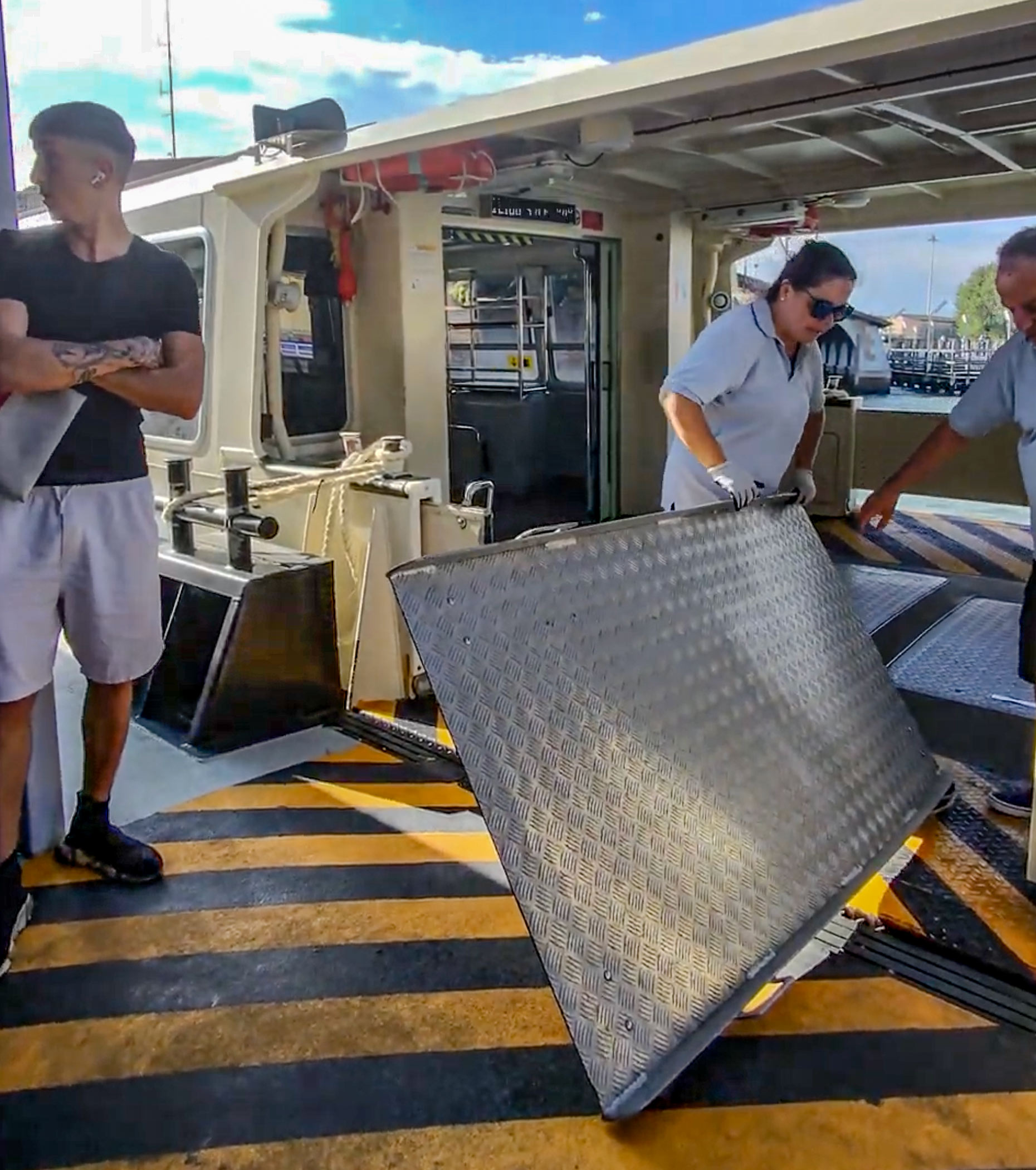
There is one wheelchair-accessible water taxi in Venice—a smaller boat that functions like a private water-based Uber, taking you directly to your destination. It has a platform lift that can accommodate one wheelchair at a time. When I asked my hotel about booking it for a scenic ride around the city, they told me that most of the time, the operators come up with excuses not to take wheelchair users. Unfortunately, it seems that because boarding takes more time, they often prioritize able-bodied passengers to maximize their profits.
While that’s frustrating, I still think it’s worth trying to book in advance if you’re interested. My friend Cory Lee was able to use it during his trip, so it’s definitely possible! You can read about his experience on his blog here.
Bridges and Islands
Navigating Venice’s many islands and bridges in a wheelchair can be a challenge, but we found a map from 2017 that highlights which islands are accessible versus which are not and it proved pretty accurate.
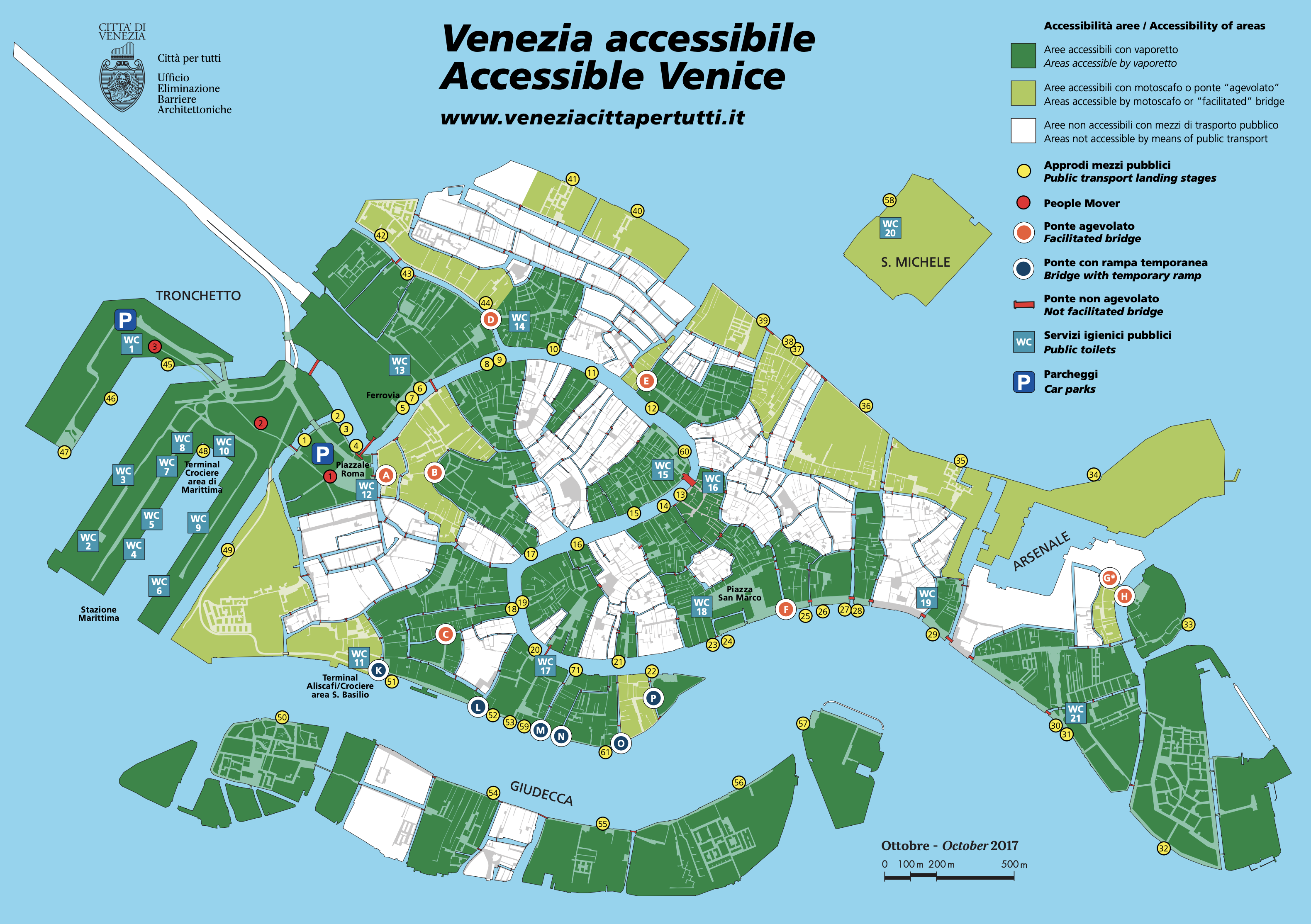
However, what I really wish existed (and couldn't find) was a map of accessible bridges so I started creating one myself. This resource is not comprehensive because I did not tour all of them, but hopefully this will give you somewhere to start!
Venice really does make an effort to make their bridges accessible for not only wheelchairs, but strollers, luggage or workers using carts. We found a wide variety of bridges with mini metal ramps between each step, while others have larger scaffolding-style ramps that allow you to cross without stairs. These were most commonly found in St. Mark’s and residential neighborhoods, but I found a few in other areas too.
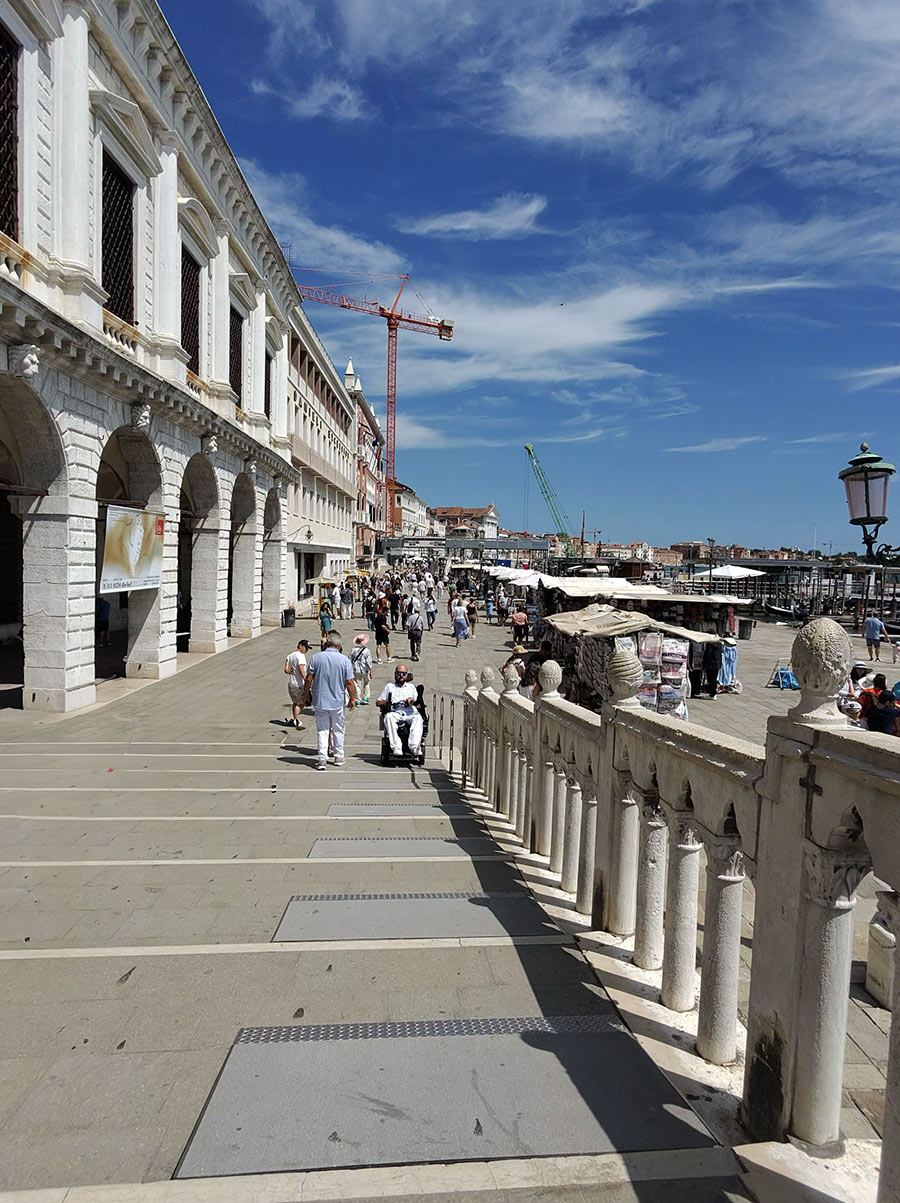
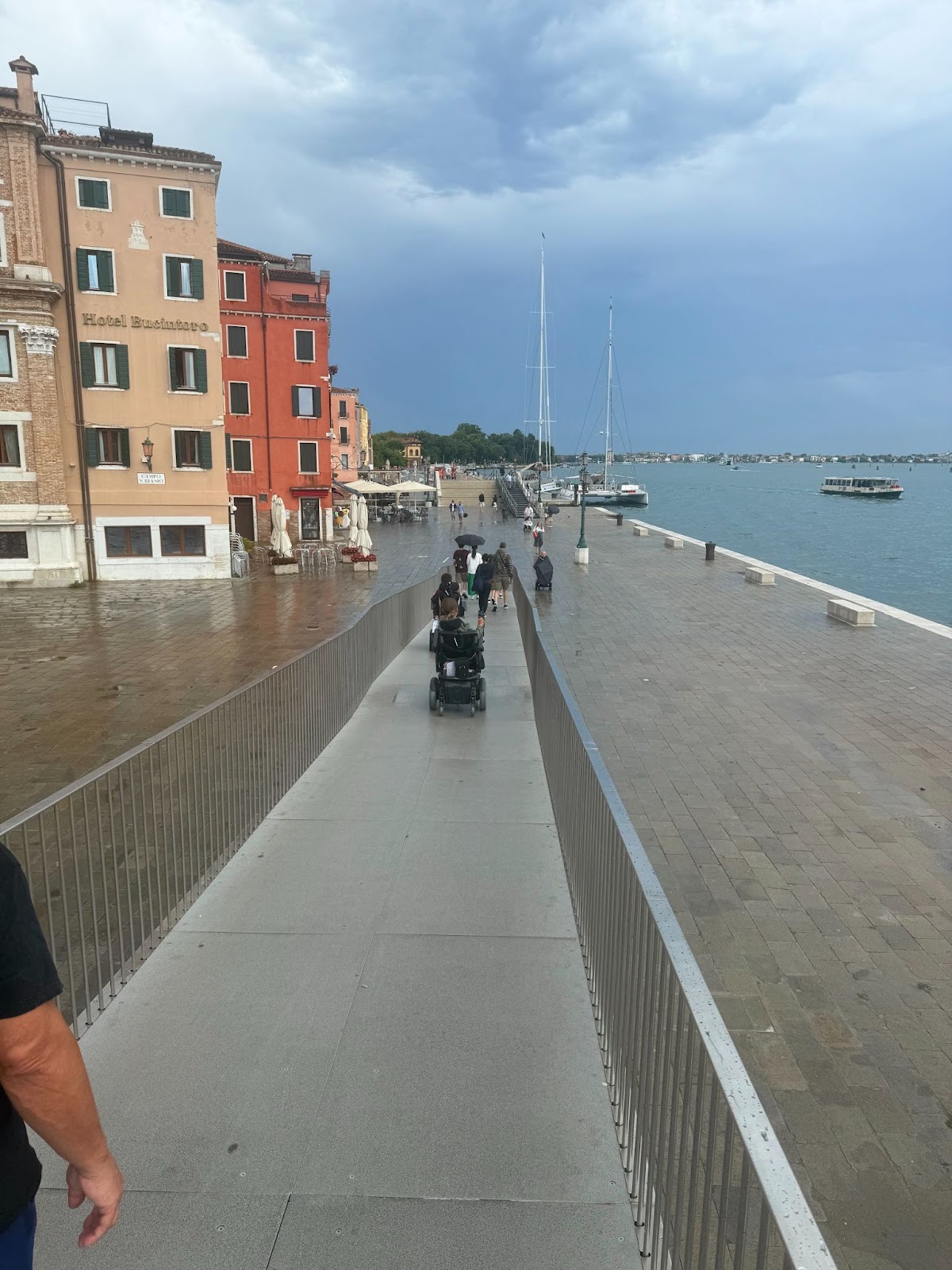
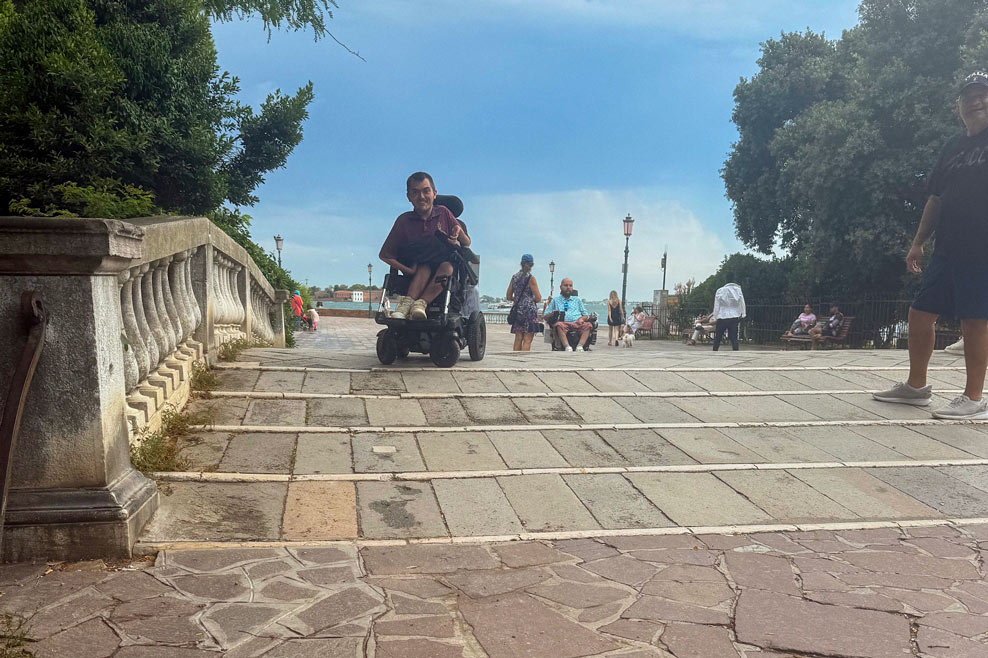
Accessible Bathrooms in Venice
One huge win in Venice: wheelchair-accessible bathrooms are free (while others pay). Most museums have clean, spacious restrooms that fit a wheelchair and one or two assistants.
They're also marked on the city-provided map highlighting the locations of accessible bathrooms. Most are well-marked and easy to find.
Where We Stayed: Hotel Santa Chiara
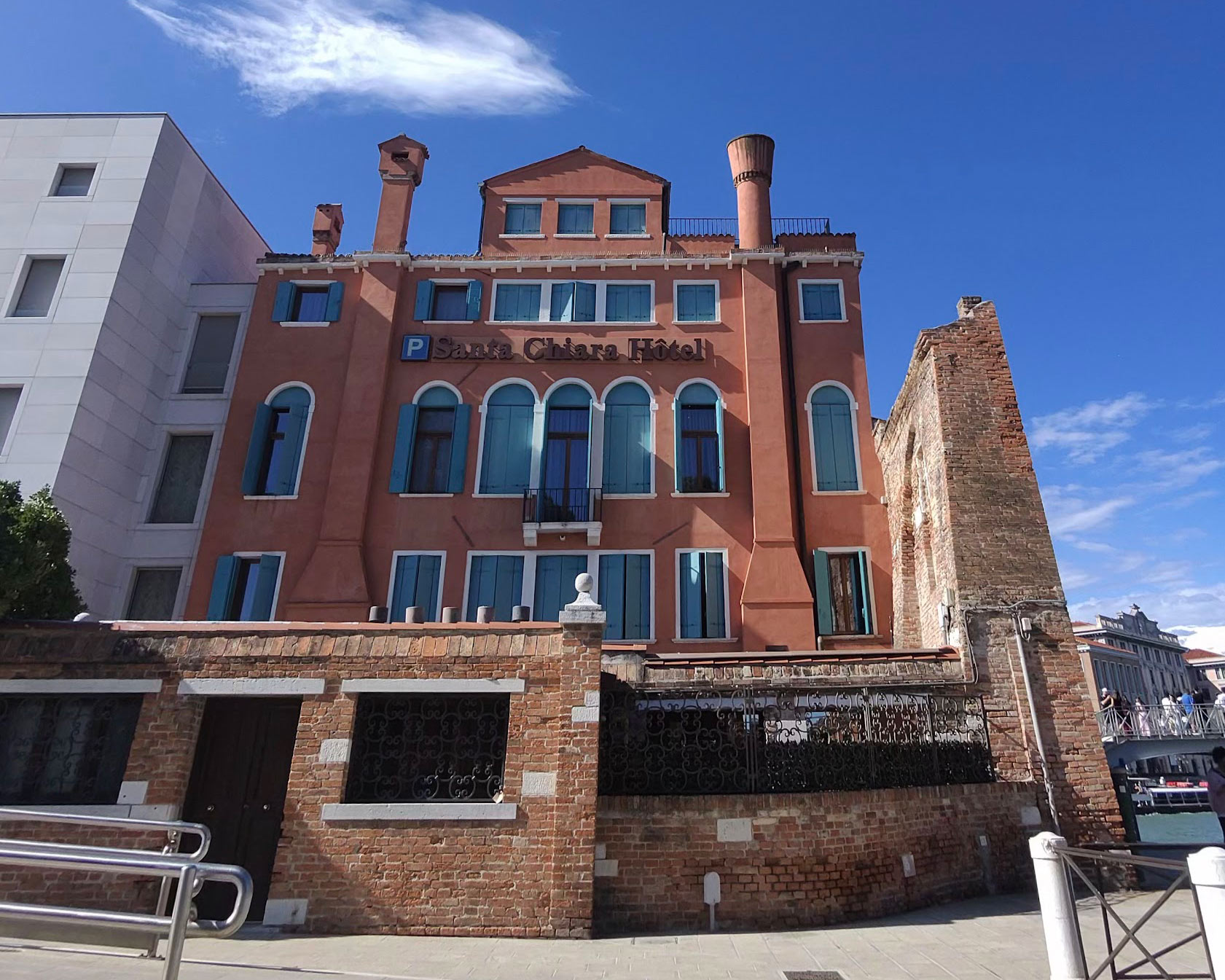
We booked Hotel Santa Chiara, located just one vaporetto stop from the train station and right on the Grand Canal. The hotel has a mix of accessible and standard rooms:
- Our accessible room had a roll-in shower, grab bars, and a roll-under sink—perfect for two people.
- The standard room used by other family members had a step into the bathroom, but was large enough to fit a rollaway bed.
While the location was convenient for transportation, there was only one accessible bridge connecting us to nearby islands. If I were to return, I’d look for accommodation closer to St. Mark’s Square, where more bridges have ramps and sightseeing is easier without constant boat rides.
Eating in Venice
Almost every restaurant in Venice has outdoor seating, so finding accessible dining options was rarely a problem.
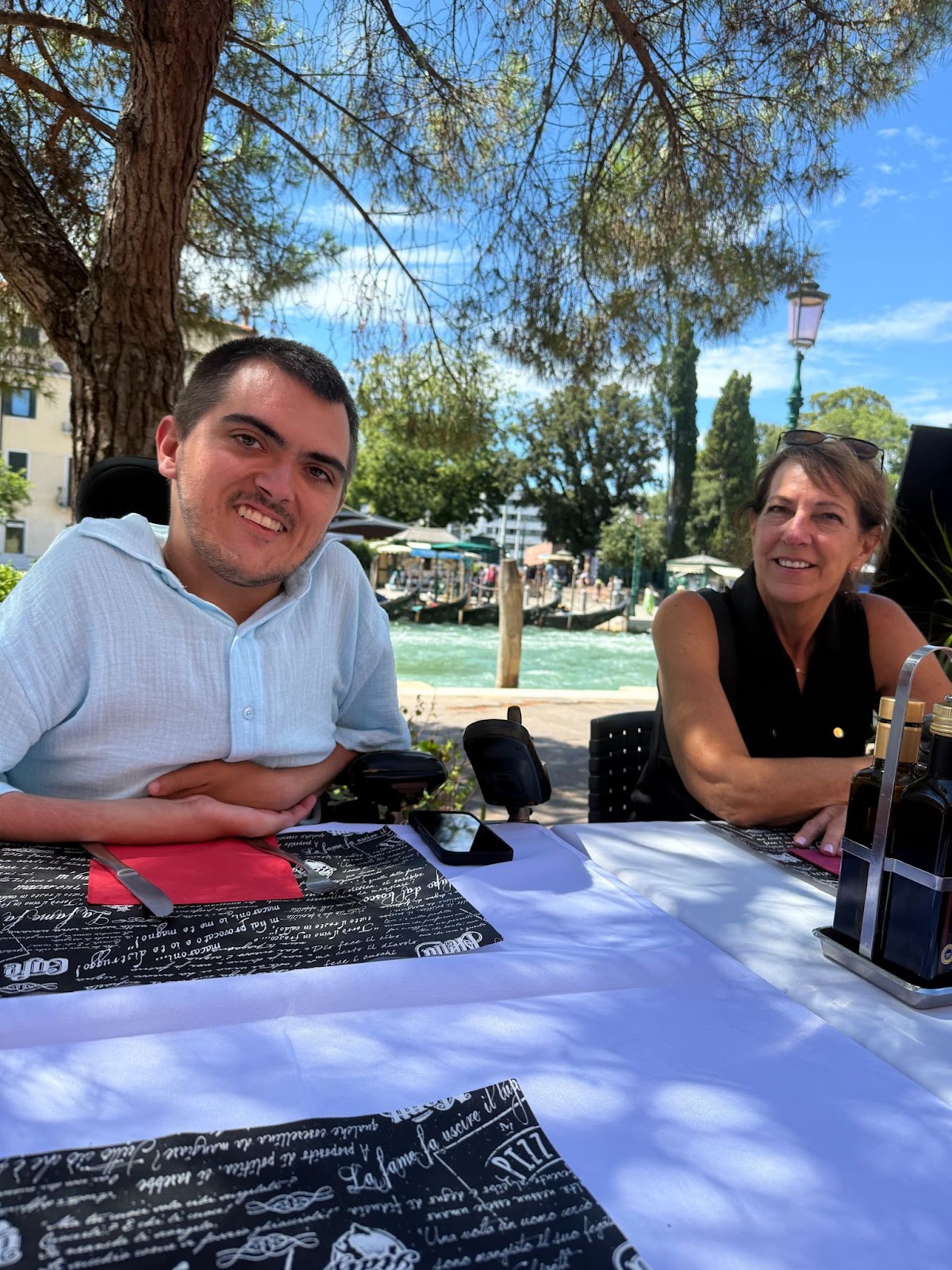
Here are a few standouts:
- Km0 Venezia Osteria: A waterfront, accessible restaurant within walking distance of our hotel — perfect for my brother’s birthday lunch.
- Caffè Florian: A must-visit, even if you’re just grabbing coffee. This is Italy’s oldest coffeehouse, opened in 1720, located in the iconic St. Mark’s Square. I ordered the famous hot chocolate, considered one of the top five in the world. Pro Tip: Be sure to add the sugar they provide. At first it did not taste great and I was confused why it was considered one of the best. Once I stirred in the whipped cream and sugar, it became rich, creamy, and completely decadent. Caffè Florian is expensive, but worth it!
- Osteria San Isepo: Our tour guide’s top recommendation, located in a quiet residential area away from the tourist crowds. My family dubbed it the best meal of the trip!
- Gelateria Il Pinguino: Another guide-recommended gem. Tucked away from busy areas, this spot had delicious gelato and was also easy to access with wheelchairs.
💡 Pro tip: Sometimes the best meals in Venice aren’t near the canals or squares, but hidden in quiet corners of local neighborhoods.
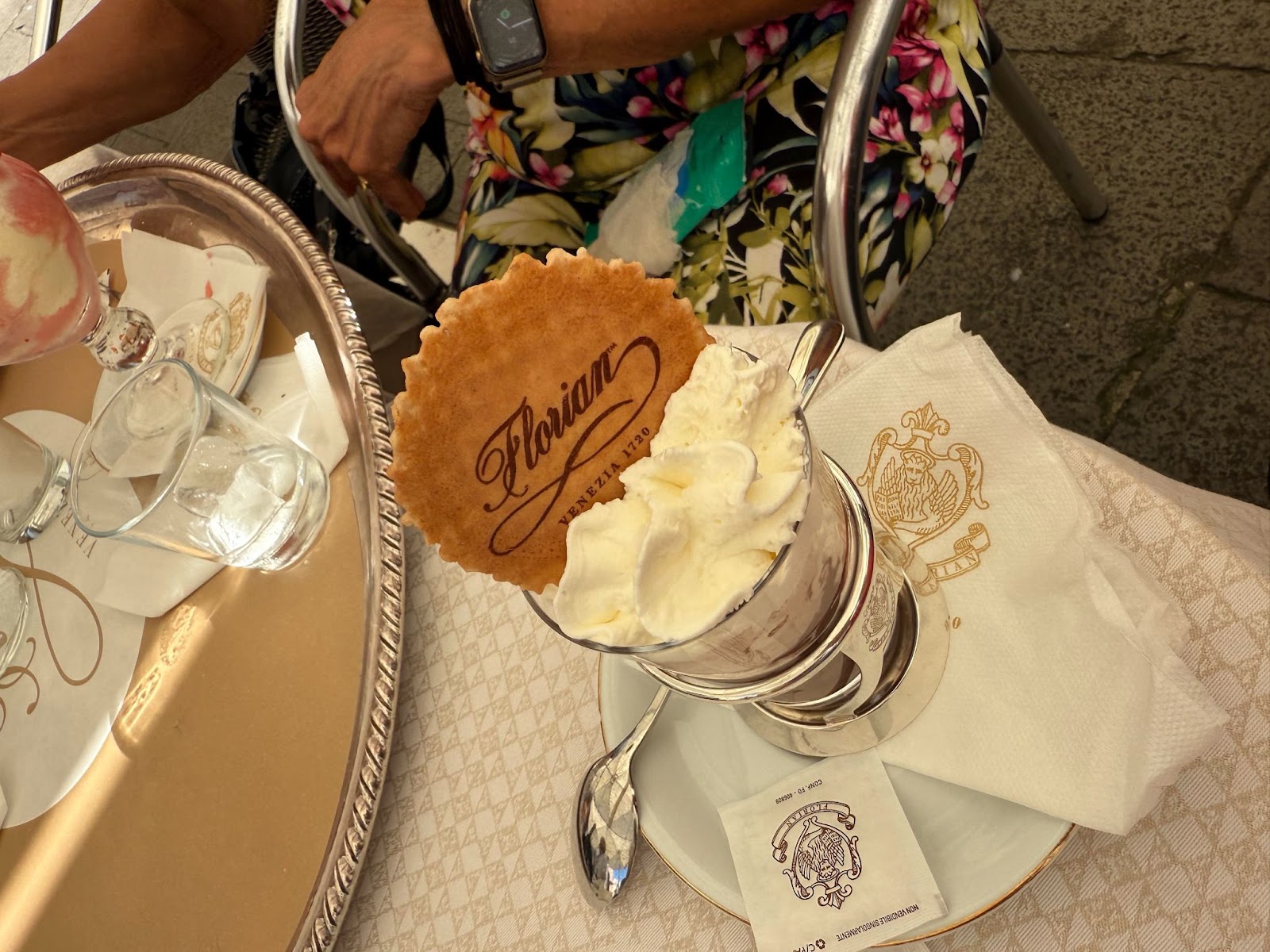
Day Trips and Accessible Tours
Murano & Burano
We made it over to Murano, a charming island known for its historic glassblowing industry. Back in 1291, Venice moved all glass production here to prevent fires and protect trade secrets.
- We visited the Murano Glass Museum (free for wheelchair users and companions)
- Browsed the many beautiful shops full of handcrafted glass
- Enjoyed lunch on the waterfront at the Hilton which had step-free access and a peaceful atmosphere
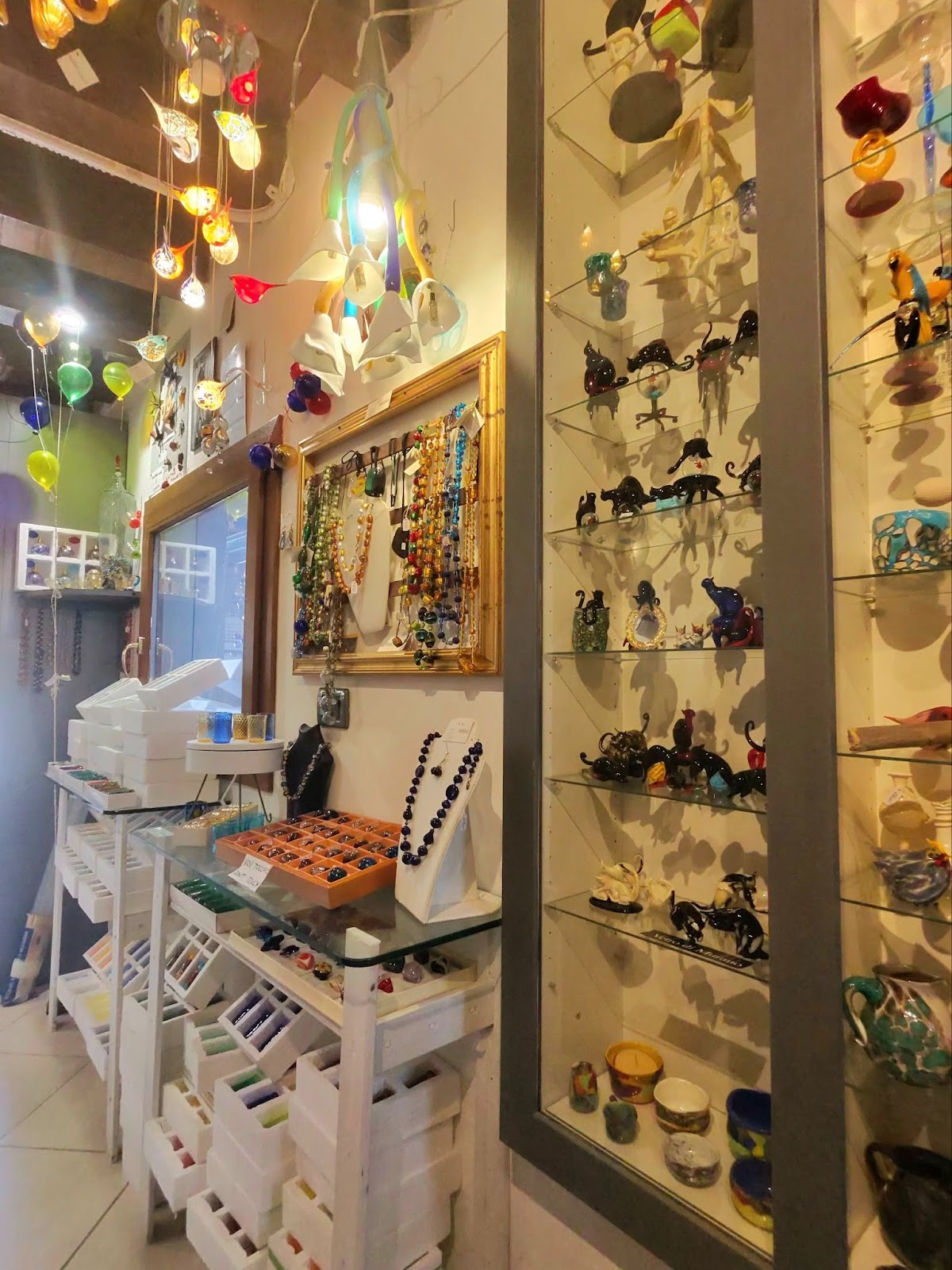
We had planned to continue to Burano (famous for its colorful houses), but the boats to smaller islands can only take one wheelchair at a time, which made logistics difficult for the three of us. If your group can manage it, Burano is accessible and still highly recommended.

Guided Tour of St. Mark’s, Doge’s Palace and the Basilica
We ventured into one of Venice’s most iconic sites with an accessible tour of St. Mark’s Square, Doge’s Palace, and the Basilica, booked through Viator. Our guide, Denise, met us at our hotel and guided us into Piazza San Marco, where she shared the fascinating history of the square and surrounding architecture.
St. Mark’s Square
St. Mark’s Square, often referred to as "Piazza San Marco," is the beating heart of Venice, known for its imposing architecture and vibrant ambiance. While navigating the square, our guide recounted the area's history as the political and social center of Venice, where public events, politics, and trade once converged.
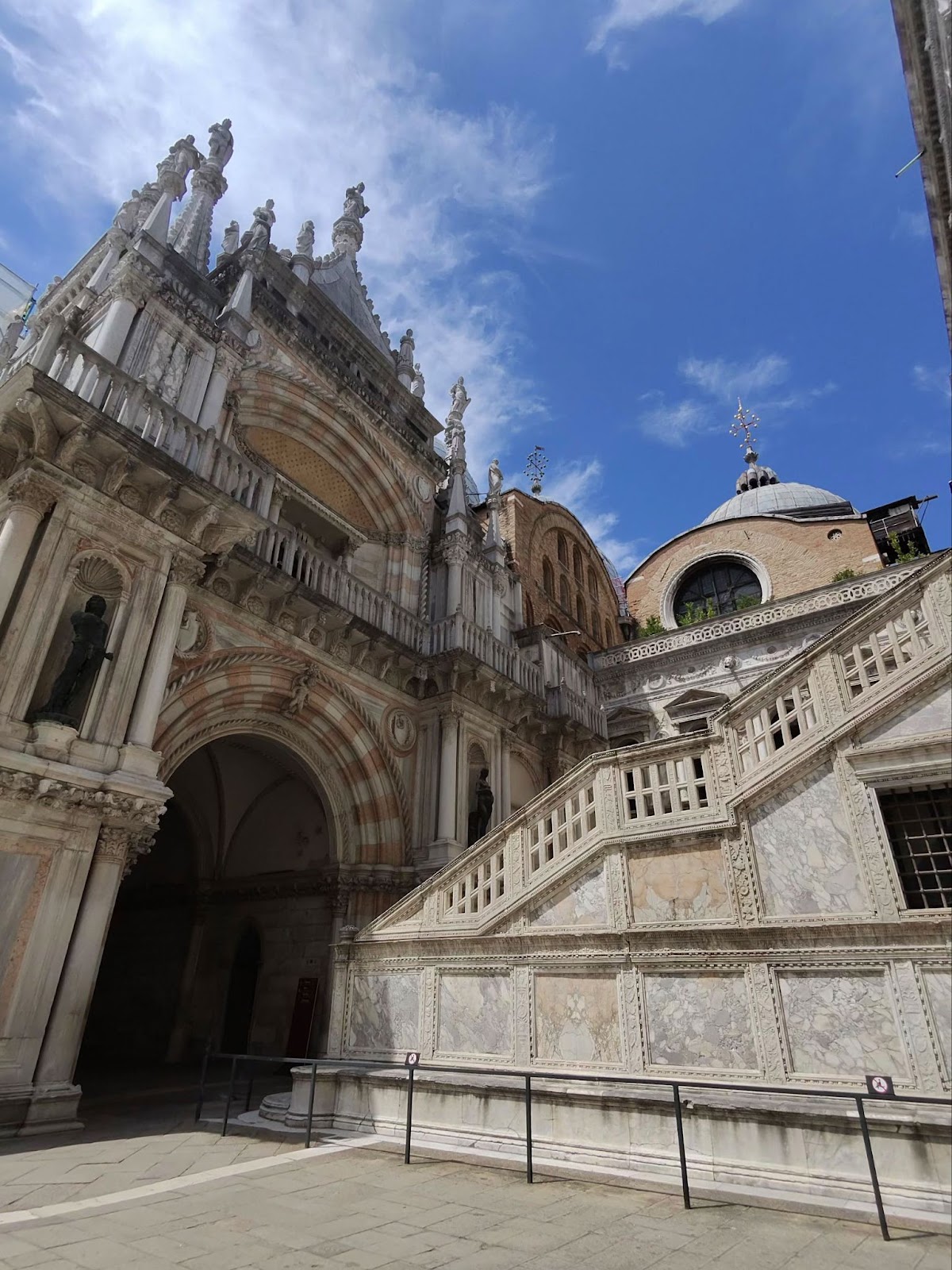
Doge’s Palace
The Doge’s Palace, a masterpiece of Venetian Gothic architecture, served as the residence of the Doge, the supreme authority of the former Republic of Venice. Despite its age, it remains remarkably accessible. Visitors can smoothly enter the palace and access its first and second floors via an elevator, with ramps and accessible restrooms provided throughout. Notably, the palace features exceptional art, including works by renowned artists such as Titian and Bellini, which we thoroughly enjoyed during the tour.
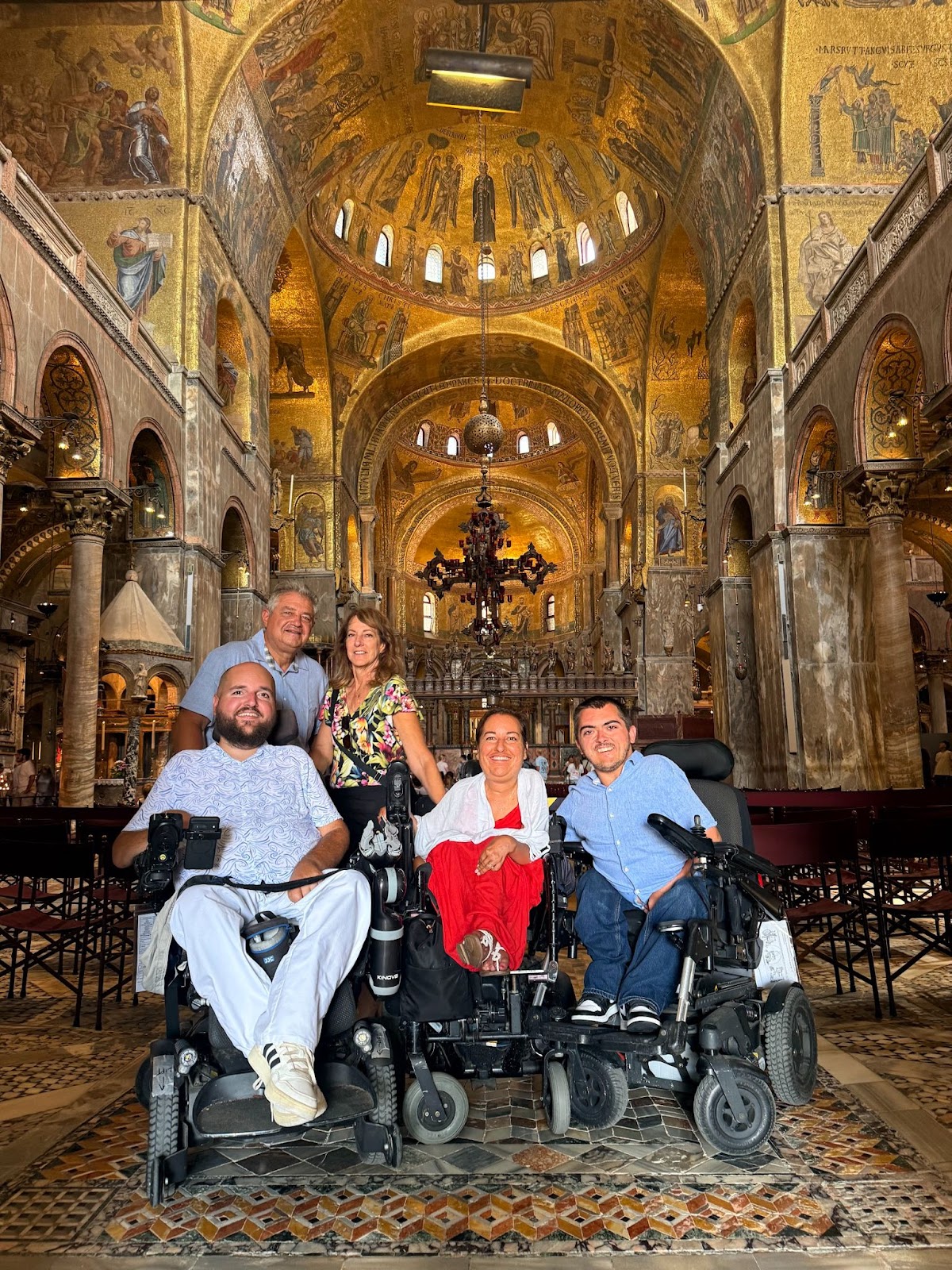
Basilica di San Marco
This iconic basilica is known as the “Gold Basilica” due to the extensive golden mosaics that cover nearly every inch of the interior. Denise said there’s 8,000 square meters of 24k gold inside! Originally built as a ducal chapel, it now stands as one of Venice’s most important religious and architectural sites.
- Accessibility was not a problem, and our guide helped us avoid any steps and crowds.
- Don’t forget to bring clothes that cover your knees and shoulders!
Learn more about the tour here: Accessible Venice Tour With Wheelchair Including Doge Palace & St. Mark Basilica
Final Thoughts: Is Venice Worth It for Wheelchair Users?
Absolutely.
Venice may not be the most accessible city at first glance, but with the right planning and mindset, it’s surprisingly doable. We had an unforgettable time and were able to experience the magic of this unique city in full.
If you’re considering a trip to Venice and use a wheelchair, I say go for it. There’s beauty here waiting for you.

